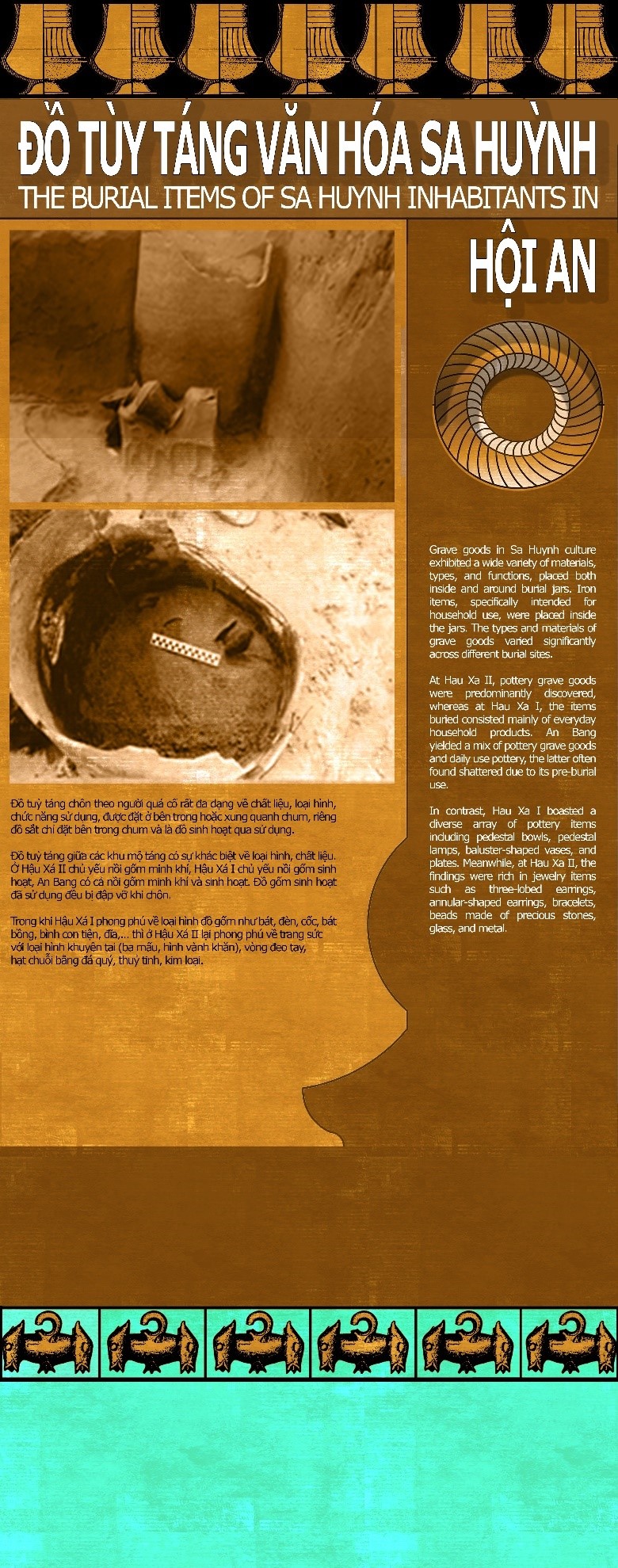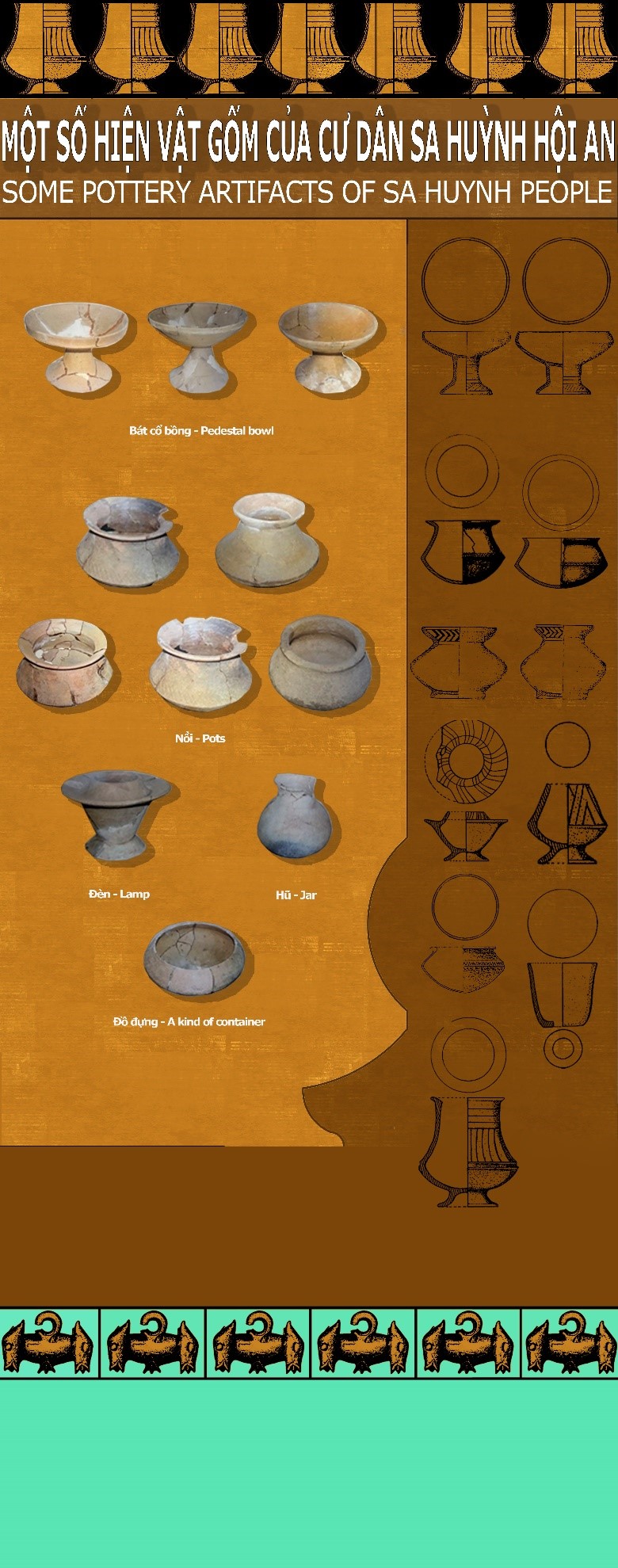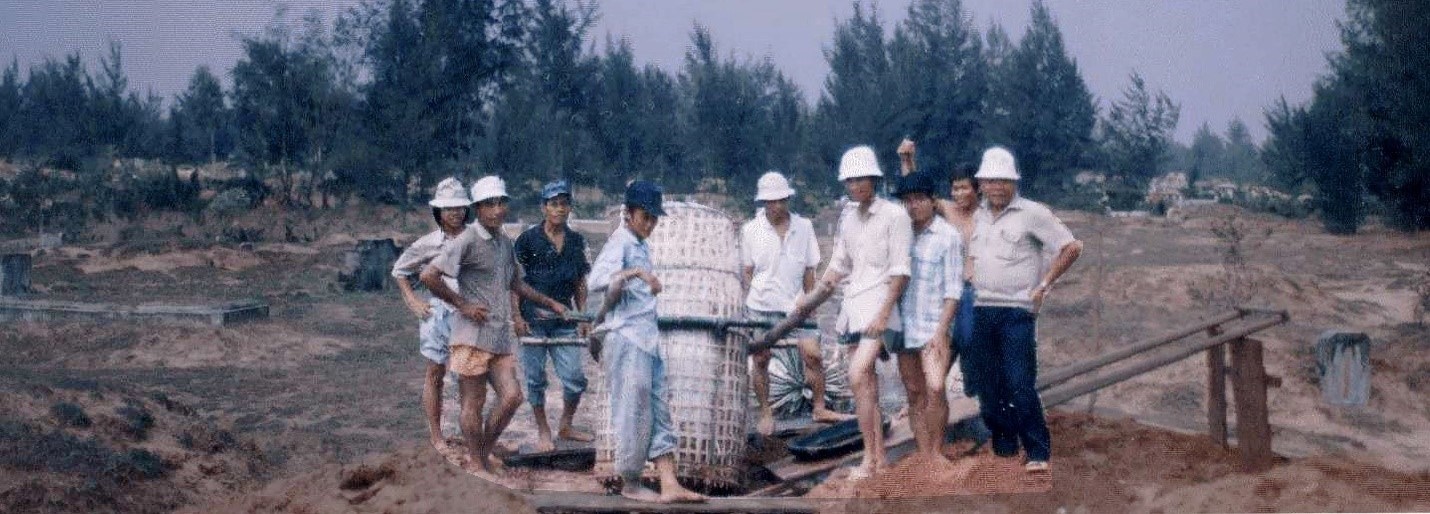
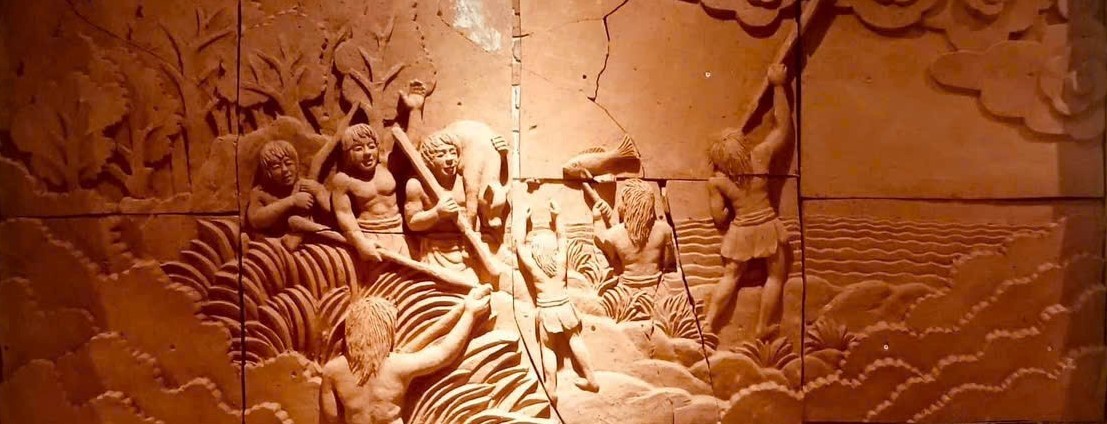
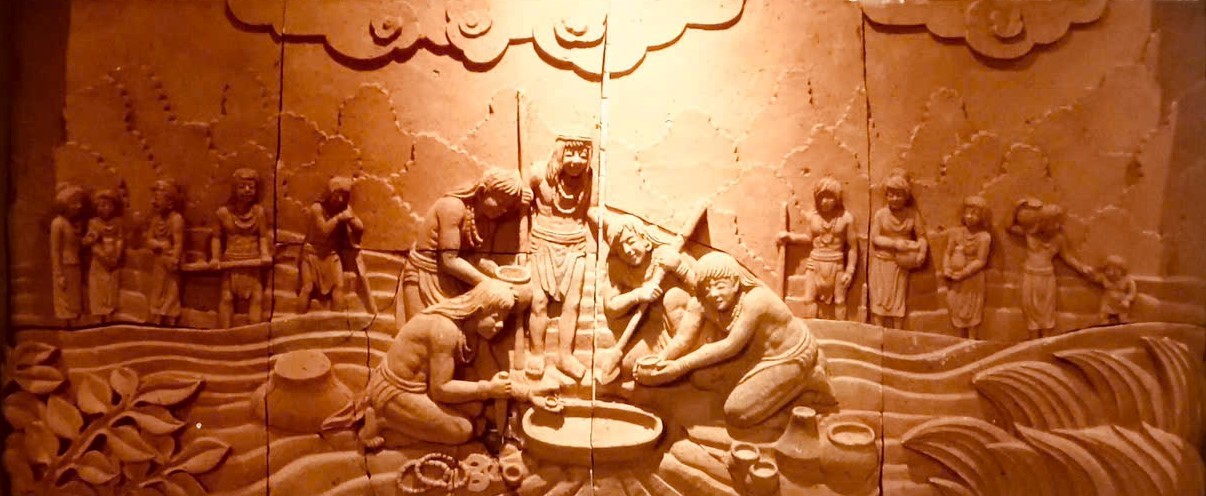
Explore archaeological excavation sites located on the sand dunes along the river in ancient Thanh Ha land and learn more about terracotta in Champa architecture
The archaeological excavation sites are all located on the sand dunes running along the river in the ancient Thanh Ha land. It can be affirmed that Thanh Ha is the main homeland of the ancient Sa Huynh people in Hoi An who were very good at making folk pottery.
Sa Huynh culture in Thanh Ha - Hoi An
Sa Huynh culture is a archaeological culture was dated to around the year 1000. BC to the end 2nd century. Sa Huynh culture is one of three ancient cradles of civilization in the territory. VietnamThrough research, the appearance of a unique culture in Central Vietnam has been identified.
The ancient inhabitants of the Sa Huynh Culture system were the owners of the indigenous culture and the early port town of Hoi An in the Sa Huynh culture period, the late period ± 2,000 years ago, laying the foundation for the formation of a small kingdom in Central Vietnam. The “Sa Huynh Culture Archaeological Excavation Project in Hoi An” funded by Toyota Foundation was implemented from 1993-1995 to introduce the late Sa Huynh - early Cham reference system to Sa Huynh and Cham scholars nationwide and internationally.
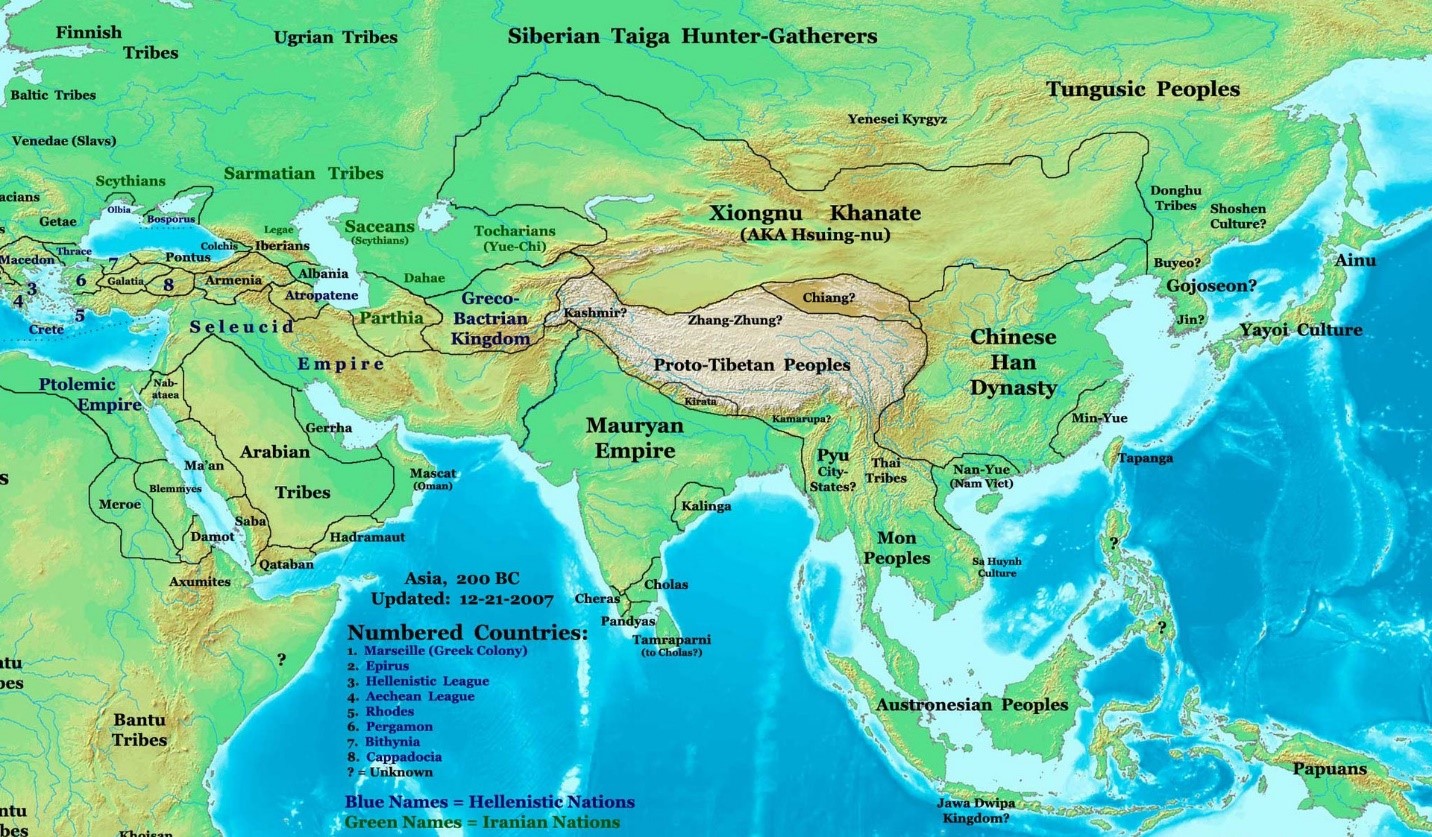
Map of cultures in Asia around 200 BC, showing the location of the Sa Huynh Culture
DISTRIBUTION DIAGRAMS OF SA HUYNH CULTURAL RELICS IN HOI AN
Archaeological excavation sites from Go Ma Voi, Trang Soi, An Bang, Thanh Chiem, Hau Xa 1, Hau Xa 2, Xuan Lam are all located on the sand dunes running along the river in the ancient Thanh Ha land. It can be affirmed that Thanh Ha is the main homeland of the ancient Sa Huynh people in Hoi An, who were very good at making folk pottery. From 73 jars excavated in 5 locations, thousands of artifacts, specimens, pottery, jewelry... have been collected, which are evidence of the wonderful talent to create a unique CERAMICS cultural identity of the late Sa Huynh civilization on the mainland.
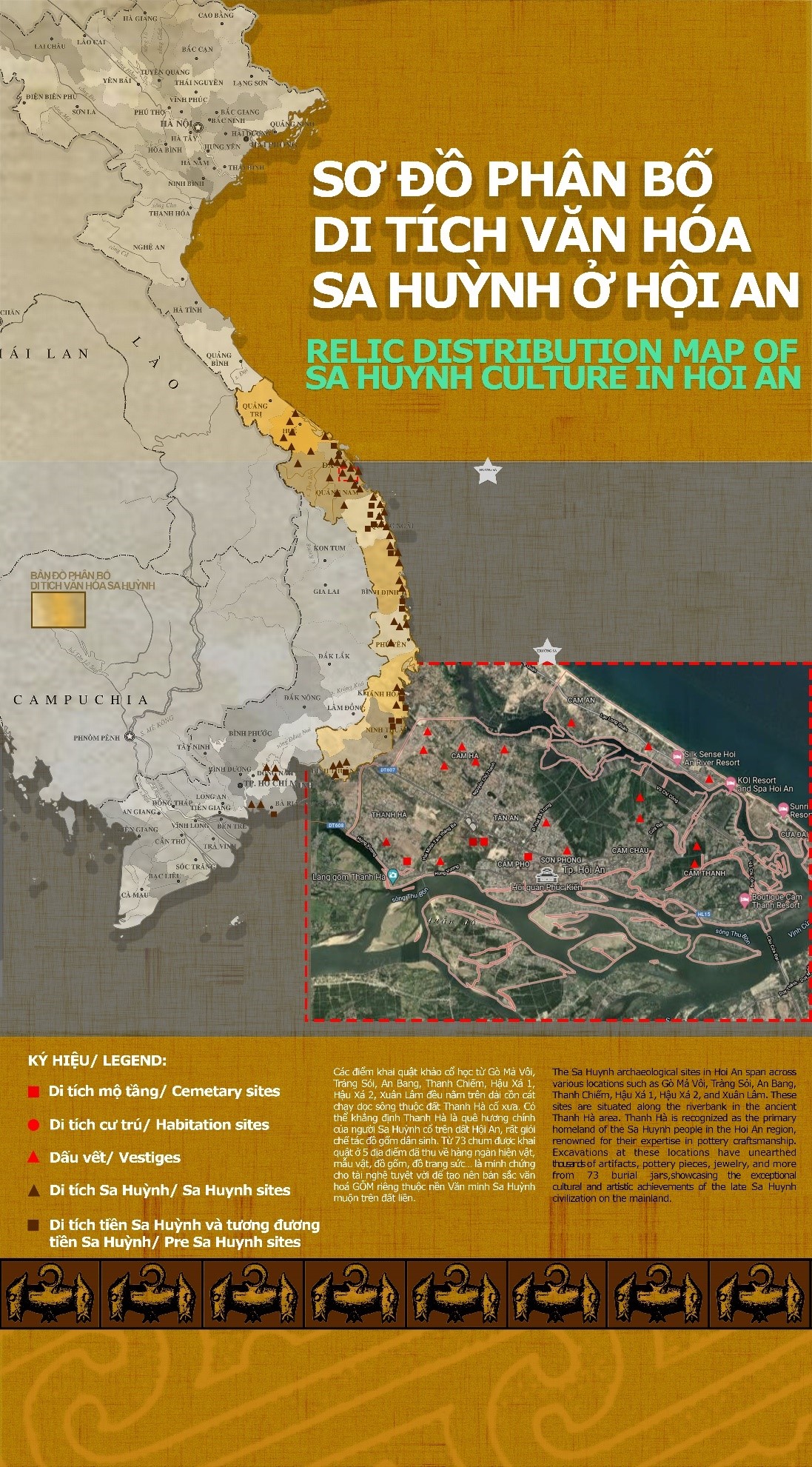
MAP OF EXCAVATION SITES IN THANH HA AND CAM HA - HOI AN
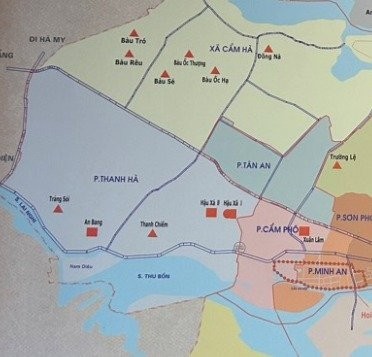
TRANG SOI SITE – THANH HA
Located on the sand dunes on the northern bank of the ancient Roc Gom stream of Thanh Ha, Trang Soi was discovered and excavated in November 1994 with 2 excavations with a total area of 12m2. Each excavation has a cultural layer 0.7-0.9m thick. The artifacts in the relic have a stable evolution from early to late in the two cultural layers and there is no difference in stratigraphy.
The upper layer concentrates a lot of Chinese (Tang Dynasty), Islamic, and Vietnamese ceramics, porcelain, and semi-porcelain dating from the 8th-14th centuries. The lower layer has a lot of rough and slightly rough ceramics from the late Sa Huynh and early Champa cultures, dating from around the 3rd-4th centuries AD.
The above findings provide information about a continuous trading settlement of ancient residents in the style of village - wharf, riverside - near the sea in the Urban - Commercial Port of Hoi An during the 3rd - 14th centuries.
Trang Soi Archaeological Site – Thanh Ha
AN BANG FUNERAL SITE CERAMICS
Located on the long sand dunes of Thanh Ha, the An Bang extended relic site was discovered, excavated 4m deep.2 in July 1989 and excavated 26m2 April 1995. In this area alone, 18 burial jars, pots, bowls, vases, plates, plumb bobs, lamps, knives, machetes, axes, shovels, curved blade tools, earrings, bracelets, beads made of stone, agate, glass, metal... were found.
The excavation results not only reflect the high population density of this area but also provide a lot of information about the intentional concentration of burials. In particular, although buried close together, the boundaries of the burial jars intersected consciously (the later burial jars did not break the previous ones). The thick layers of ash and charcoal around some jars and the fine white sand in the boundary of the burial jars revealed a number of issues related to the burial customs of Sa Huynh residents. In particular, the pottery showed that the cultural life of Sa Huynh residents was at a high level.
HAU XA I RESIDENTIAL AND TOMB RELICS
Located on the northern sand dunes of the ancient Roc Gom stream, the Hau Xa I burial site and residential site was discovered in July 1989 and explored and excavated in February 1993, August 1993, and January 1994 with a total area of 90.5 square meters.
The burial site has 4 excavation pits with a total area of 42.5m2. The results of the discovery of 30 burial jars, the artifacts collected in addition to production tools and iron weapons, precious jewelry with sophisticated craftsmanship are used ceramic artifacts rich in types and patterns. The residential site has a total area of 48m2 after 2 times of exploration and excavation. In this site, the cultural layer is quite thick (from 1m - 1.5m) and has a stable development. The upper layer (from the 3rd-4th to 10th-11th centuries) contains many Cham ceramics, Luc Trieu, Duong porcelain... The lower layer (from the 1st-4th centuries) in addition to glass beads, stones and bronze Bodhi leaf-shaped objects, there are also many pieces of crude Sa Huynh, ancient Cham ceramics, gray mold ceramics, ceramics printed with Han square patterns, or Han style.
The Hau Xa I burial and residential site not only provides valuable information about the burial customs of Sa Huynh residents and the development and cultural exchange in the area, but also clarifies the relationship between Sa Huynh ceramics and Cham ceramics.
HAU XA II BURY RELIC SITE
Located on the sand dunes of Thanh Ha, the Hau Xa II burial site was discovered in July 1989, excavated in October 1993 and May 1994 with a total area of 43m2.2. In addition to iron objects, jewelry, Wang Mang bronze coins (China), earrings (3-point type, scarf ring and leech), stone beads, glass, agate, gold metal, there are also a large number of ceramics. Along with 19 burial jars, burial artifacts are pots, lamps, bowls, vases with stands showing the excellent skills of the ancient Sa Huynh people. The difference is that in this tomb area, 2 jars were discovered nested inside each other, some jars were covered with resin, there was also the phenomenon of burning fire outside the jars. Some jars contained ash and the remains of human and animal bones and teeth. Some jars had a layer of yellow - dark brown stone (laferitized) at the bottom. Test samples in England showed that the C14 age of this relic site is 2,040 ± 60 BP.
This burial site provides a lot of valuable information about the burial customs of the late Sa Huynh residents, about economic and trade relations in the region, especially the art of making pottery jars used in burial.
XUAN LAM BURYING SITE
Located in the middle of Thai Phien alley village, Xuan Lam block, Cam Pho ward; Xuan Lam burial area belongs to a part of a large sand dune, which is the center of Hoi An city today. The relic was discovered and excavated in February 1995 with a total area of 13.5m2. The artifacts collected include at least 6 burial jars that are partially remaining or broken into many pieces along with many burial objects such as pots, bowls, plates, plumb bobs, shovels, machetes, small knives with circles on the handles, 2 earrings in the shape of scarves and many beads made of glass, stone, and agate. The patterns on the pottery are quite sophisticated and may belong to professional artisans.
The burial site not only provides valuable information about the ecological imprints of riverine and coastal forests, but also shows that the ancient Sa Huynh residents here had trade relations with the Han people in the North and that they were the ancestors who laid the foundation for the later Hoi An Ancient Town.
FUNERAL OF SA HUYNH HOI AN RESIDENTS
Through the characteristics of the relics and artifacts, it can be seen that the typical burial custom of Sa Huynh residents in Hoi An is that they often choose high sand mounds along the river to make burial areas. Jar tombs are buried in clusters of 2 to 4 jars, the jars are not stacked on top of each other. The jar tombs are mainly single jars, only at Hau Xa II, 2 jars were found nested together. Most of the outside, the bottom of the jars are lined with stone. Some jar tombs have charcoal around the jars. Ash, children's teeth and animal bones were found in the bottom of the jars. The tomb edges have white sand or round white sand holes; the jar lids are attached to the mouths of the jars by a layer of plant resin. Although there are 4 types of jars: egg-shaped, cylindrical, pot-shaped and spherical, there are differences in the types of jars excavated between locations. If in Hau Xa I there were all kinds of jars, in Hau Xa II there were only cylindrical and pot-shaped jars, Xuan Lam had cylindrical, pot-shaped and spherical jars, An Bang had cylindrical and pot-shaped jars. Regarding cylindrical jars, while An Bang and Xuan Lam mainly had cylindrical jars without shoulders, in Hau Xa I there were only cylindrical jars with shoulders.
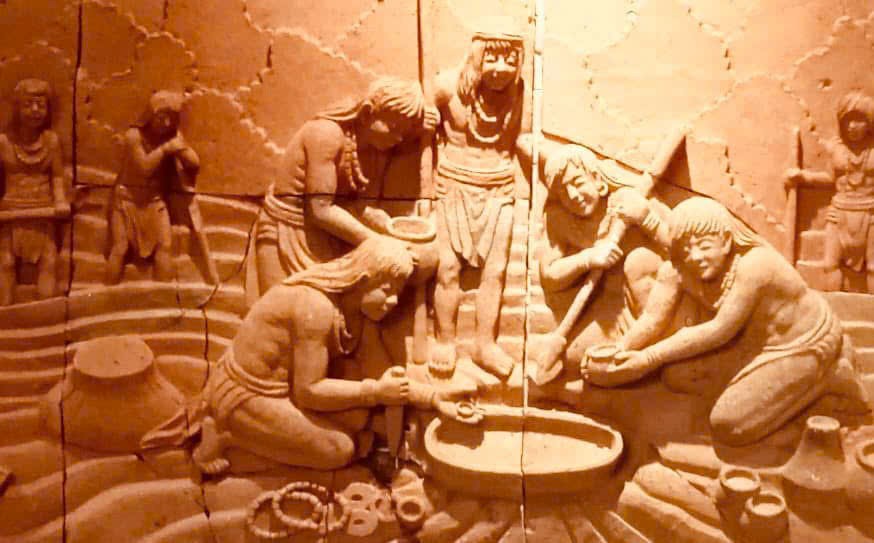
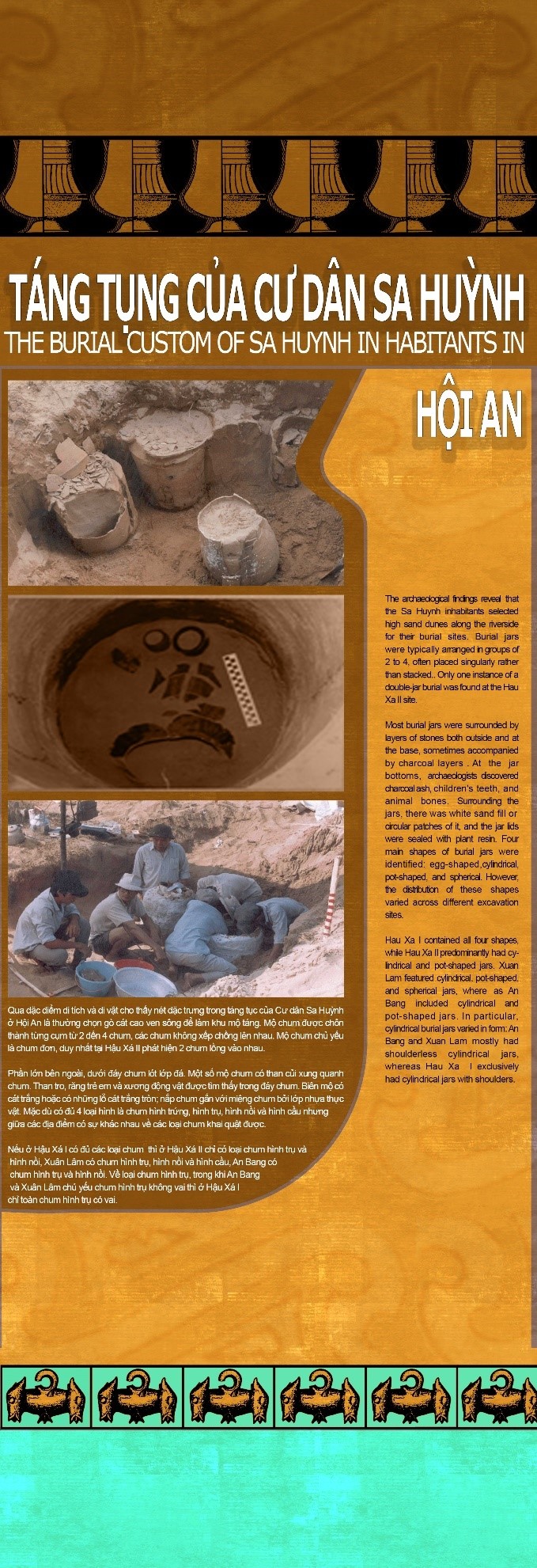
TYPES OF JARS IN SA HUYNH CULTURE IN HOI AN
There are four main types of Sa Huynh Culture burial jars: egg-shaped, cylindrical, pot-shaped and spherical.
Egg-shaped burial jar
The egg-shaped burial jar has a long egg-shaped body, a large bottom, a small, slightly flared mouth without edges, and is decorated with rope flowers from the shoulders down.
Cylindrical burial jar
Cylindrical burial jars include the shouldered type with a relatively uniform cylindrical body, flared mouth, no lip edge, waist neck, broken shoulder, bulging hips, round bottom, the whole body or from shoulder to bottom is decorated with rope patterns. The shoulderless type has a cylindrical body, large round bottom, slightly tapered towards the mouth, flared mouth, body decorated with rope patterns.
Pot shaped tomb jar
Pot-shaped burial jar with a flared mouth, no lip, bulging sides, round bottom, body decorated with rope patterns or brushed patterns on a rope base.
Spherical jar shape
Spherical burial jar with vertical rim, flat bottom, two small handles and three sunken lines on the shoulder, decorated with diamond-shaped prints.

SOME TYPES OF CERAMIC JAR LIDS IN SA HUYNH CULTURE IN HOI AN
There are two types of jar lids: the truncated cone-shaped type with yellow ochre paint, lead sheen, with or without decorative lines and dots, and the inverted table-shaped type without decorative patterns.

PATTERNS ON SA HUYNH CERAMICS IN HOI AN
The patterns on Sa Huynh Hoi An pottery are quite rich: printed on the edge of a shell, rolled or stamped with rope, brushed with a hard, fibrous object (like a bamboo broom) or dotted, scratched with a hard, sharp object, pressed with fingernails, smoothed with lead, painted with yellow ochre. These are methods associated with the characteristics of Sa Huynh Hoi An culture.
FUNERAL ARTIFACTS OF SA HUYNH CULTURE, HOI AN
The burial objects buried with the deceased are very diverse in materials, types, and functions, placed inside or around the jars. Iron objects are only placed inside the jars and are used household items. The burial objects between the burial sites are different in types and materials. In Hau Xa II, there are mainly pottery pots for burial, Hau Xa I mainly pottery pots for household use, An Bang has both pottery pots for burial and household use. Used household items are all broken when buried. While Hau Xa I is rich in types of pottery such as bowls, lamps, cups, bowls, vases, plates, etc., Hau Xa II is rich in jewelry with types of earrings (three-pronged, scarf-shaped), bracelets, beads made of precious stones, glass, and metal.
